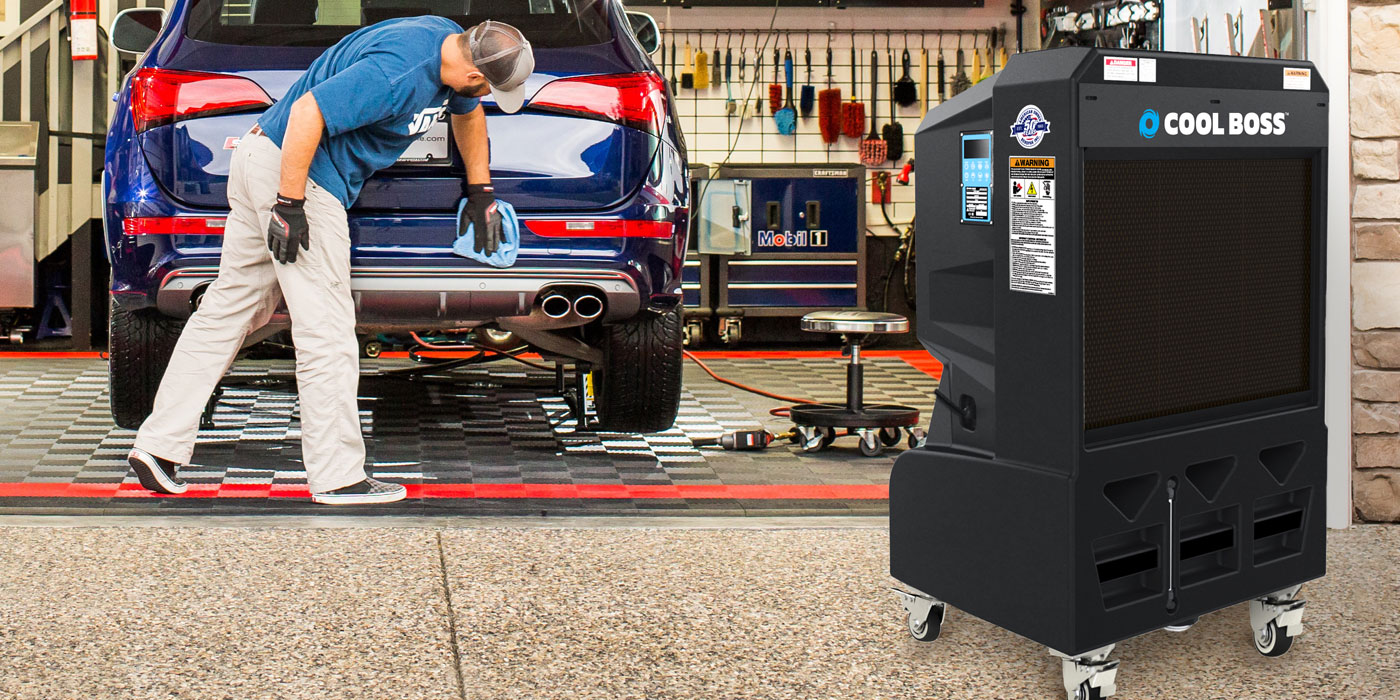Safety is imperative for all businesses, and especially for carwashes and detail shops. While decades of safe and clean operations will rarely yield a mention in local news reports, a serious accident will undoubtedly gain a car care business attention in multiple newspapers and on numerous television stations. Still, more than marketing and publicity, it is vitally important for operators to keep employees and customers out of harm’s way.
The Occupational Safety and Health Act of 1970 was enacted by the United States Congress, and the Occupational Safety & Health Administration’s (OSHA) website (OSHA.gov) said the act was created to:
- Assure safe and healthful conditions for working men and women;
- Authorize enforcement of the standards developed under the act;
- Assist and encourage the states in their efforts to assure safe and healthful working conditions; and
- Provide for research, information, education and training in the field of occupational safety and health.
Though the list above seems to include common sense goals, one visit to OSHA’s exhaustive and exhausting website shows compliance is not that cut and dried. Even a cursory visit reveals that the website is made up of hundreds of separate pages, and all are packed with different regulations, requirements and safety information. This online information overload can definitely lead a carwash owner to wonder what specifically applies to this industry.
What is the most important OSHA information for carwash owners and operators? Further, as we move into 2013, what are the most important OSHA considerations business owners must make to protect both employees and their operations?
Enforcement
Today, the federal government is intently focused on the enforcement of OSHA legislation. In fact, enforcement has proven to be a “watchword” for the Obama administration, according to Edwin G. Foulke Jr., co-chair of the Workplace Safety and Catastrophe Management Practice Group with Fisher & Phillips LLP. Foulke has been involved with OSHA legislation since 1980, and he was named by President George W. Bush to head OSHA, where he served from April 2006 to November 2008.
Foulke stated that the current OSHA enforcement push includes various performance metrics for area directors and regional administrators. These metrics include the number of inspections that are performed and the number of citations that are issued. Here, as the number of required citations has increased, OSHA employees have had to figure out how to find more violations. To that end, OSHA inspections now frequently focus on the “low-hanging fruit.”
There are a number of a ways a business can end up on an inspection list. First, hospitals, EMTs and the media will contact OSHA if a serious accident or fatality occurs at a business, Foulke noted. Also, if an employee files a formal complaint with OSHA, the agency will come in and inspect a location.
In addition, OSHA performs site specific targeting. Foulke explained that companies with high injuries, noise or DART (days away, restricted and transferred) rates will be targeted for more frequent inspections. Thus, businesses with a DART rate of eight or nine are more likely to be inspected.
Finally, OSHA also has special emphasis programs meant to target companies within certain industries. Here, an enforcement office will identify all the businesses that operate in a specific industry within their jurisdiction, Foulke stated. As part of the emphasis program, the agency will do a certain amount of inspections on the different local businesses that operate within the recognized industry.
Inspections
“An OSHA inspection can occur at any time, including busy days,” said Gina Houser, safety and health coordinator for Autobell Car Wash Inc. According to Houser, OSHA performed 130 inspections in 2012, including both planned and partial inspections.
For 10 years, Houser has worked for the North Carolina-based Autobell Car Wash chain, and she has served as safety and health coordinator for over two years. Today, Autobell uses a safety program at its 65 locations made up of different initiatives and policies developed over the life of the chain. As coordinator, Houser helped pull the pieces together so that, when OSHA initiates an inspection, the company can show a record of taking employee and customer safety seriously. For Autobell, each inspection has proven to be a learning experience that helped the company find ways to improve or add to their current safety program.
“We have a monthly meeting at which our management team receives training on topics such as hazard communication, lockout/tagout, personal protective equipment, blood-borne pathogens and hot and cold weather safety,” Houser stated. “Employees receive training from our management team on the same topics. We also require management courses including safety to our potential store managers.”
Who is actually performing all of these OSHA inspections? Foulke revealed that when the act was passed in 1970 it gave the federal government control over OSHA. Even so, states can petition to operate their own plans. A state must adopt standards and run a program that is as effective as the federal program. If a state petitions to become a State Plan State, it becomes responsible for handling all OSHA inspections. Currently, more than 20 states are State Plan States, and they are paid by the federal government to operate.
“As a general rule, they say the state plans are more favorable to business than the feds are,” Foulke noted. “I don’t know if that’s necessarily true. I mean, maybe the penalty amounts have always been lower in the state plans. But state plans have always conducted more inspections than the feds. So it’s kind of a two-edged sword.”
Common citations
A look at the most commonly cited standards from last year reveals a number of concerns that are directly relatable to carwashes. According to OSHA.gov, the top 10 most frequently cited standards from October 2011 through September 2012 were:
- Fall protection;
- Hazard communication;
- Scaffolding;
- Respiratory protection;
- Control of hazardous energy (lockout/tagout);
- Powered industrial trucks;
- Ladders;
- Electrical, wiring methods, components and equipment;
- Machines; and
- Electrical systems design.
Houser pointed out that car care companies across the country are frequently seeing citations from this list. Some of the most common carwash issues include hazard communication, lockout/tagout, electrical, personal protective equipment and even housekeeping.
Personal protection equipment: As far as specific problems in the carwash environment, Foulke pointed out a few areas that OSHA inspectors are concentrating on today. “They seem to be focusing on the use of personal protective equipment (PPE) in carwashes and truck washes,” he said. This has been particularly true in truck washes, and Foulke said his firm has dealt with this subject frequently.
OSHA is looking at the use of PPE mostly with respect to safety glasses and other safety equipment. Here, OSHA claims that the cleaning chemicals used are corrosive, but Foulke disagreed with the agency’s assumption. While many of the chemicals are considered corrosive in the barrel, most washes are diluting one part chemical to 30 parts water. “Even if it’s an irritant, it’s clearly not a corrosive at this point,” Foulke stated.
Hazard assessments: Under the current PPE standards, OSHA has frequently found that many companies are not following through with certain on-site responsibilities. First, businesses are supposed to perform a hazard assessment at their site to determine safety hazards that might require PPE, Foulke noted. Based on this assessment, a business is supposed to create a written certification that shows they performed the assessment.
“So you don’t even have to have a written hazard assessment, but you’ve got to have a written certification that you did the hazard assessment,” Foulke explained. “And OSHA is finding between 60 and 70 percent of the employers in the country aren’t doing that.”
Once PPE hazards are found in a business, OSHA then requires a business to train employees using the agency’s PPE standard. Again, a business is responsible for a certification that shows each employee was specifically trained using the PPE standard. While most companies may use a general checklist, they may not have any of the required certifications on file.
Blood-borne pathogens: Another subject that OSHA has focused on and issued many citations for is blood-borne pathogens. This issue ties in with the PPE emphasis, and the number of blood-borne pathogens citations was high enough that it became a site-specific targeting issue for carwashes nationwide.
“If it’s blood or potentially contains blood and you’re cleaning it up, you have occupational exposure, so that kicks the blood-borne pathogens standard in,” Foulke said. “That means you’ve got to do training and you have to offer the hepatitis B vaccinations.”
In the car care industry, OSHA’s focus on blood-borne pathogens may be due to the recent unionization push in California. Foulke stated that, as far as he can tell, when the push began in California carwashes, the unions’ organization tactics included filing complaints with OSHA. The groups regularly turned in reports about employee blood-borne pathogen exposure that resulted from cleaning cars. The number of citations here increased, and the national focus on this issue was one result.
Teen workers: OSHA currently has a focus on teen workers as well, Houser added. According to OSHA.gov, in 2010, 328 young workers were killed on the job and 110,000 were injured. This has been an area that Autobell has paid attention to because they have youth workers at most of their locations.
Resources
Shows and expositions can be valuable to owners when it comes to learning about OSHA regulations. Last year, Foulke gave a presentation at the Southeast Car Wash Association’s Trade Show and Exposition. As part of the presentation, Fisher & Phillips LLP produced an inspection checklist as well as a list of strategies that every employer should implement (see sidebar).
When an owner is doing solo research, Houser first recommended that operators get a copy of the OSHA General Industry Regulations (Part 1910). Using this information, owners can figure out which regulations apply to their carwashes. In addition, most states have their own OSHA-related websites, and these can be great places to find sample programs, slideshows and other useful training tools.
“Our insurance company is another great resource. Many times insurance companies will act as a consultant with no more out-of-pocket expense than the current premium,” Houser said. “We are also members of the National Safety Council. I attend training classes through the council that have given me a tremendous amount of knowledge.”
Houser has also called upon other websites and her networking contacts, and she says these are her most valuable resources. Websites such as OSHA.gov, ansi.org and cdc.gov/niosh have proven indispensable in her research. “However, nothing can surpass the knowledge of seasoned veterans in the field of safety,” she explained. “Networking with other safety professionals in and out of the carwash arena has provided me with a working knowledge of how to apply the rules and regulations set forth in the OSHA standards.”
For carwash owners and operators that want to schedule mock inspections, there are a few options. First, some carwashes have decided to hire independent consultants. These consultants can to come in and give mock OSHA inspections at carwash locations, Houser stated.
In addition, Consultative Services from OSHA are available in every state. This is a free service offered to small and medium-sized businesses that can be beneficial because an owner receives advice from OSHA directly. Also, as long asa location is part of the Consultative Service program, there will not be any OSHA inspections unless there is a complaint, serious reportable injury or fatality. “This can give an organization time to identify and abate all hazards identified by OSHA, which is a requirement of the program,” Houser said.














